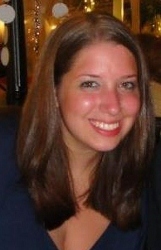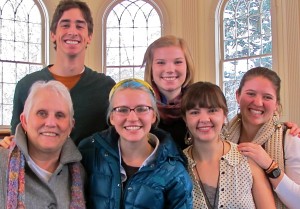
Kalamazoo College’s American Chemical Society (ACS) student group brought home to the chemistry department the coveted ‘Silver Sep Funnel’ Trophy from Michigan State University this winter. The students pipette-ed, read spectra, analyzed, and even danced their way to victory, and as the safest team (“which is the most important part for us,” says Regina Stevens-Truss, who shares co-advising duties for the group with fellow chemistry professor Jeff Bartz). The K ACS student group participated last year for the first time and placed sixth. This year, they won the overall competition, brought home best “safety dance,” earned most artistic accolades for the “best scientific-themed hangman,” and were also the “safest working team” based on OSHA standards.
2013 was the sixth annual Battle of the Chemistry Clubs, an event that originally put into the pipette pit (so to speak) the University of Michigan-Flint against the University of Detroit Mercy. The field has since grown to 12 schools, with Kalamazoo College joining in 2012. Competition consists of several activities that test a team’s knowledge and skill as it pertains to different chemistry concepts. All activities are team based (each with 4 or more students) and are scored and ranked based on time or accuracy. Morning prelims are followed by the afternoon’s “playoffs mode,” with only one team taking home the hardware.
Josh Abbott was the only returning K “letter winner” from last year’s sixth-place team. He vowed then that K would be well represented this year and wrote immediately after this winter’s competition to Dr. Truss: “I would just like to let you know we brought some hardware back for Dow.” Sweet!






